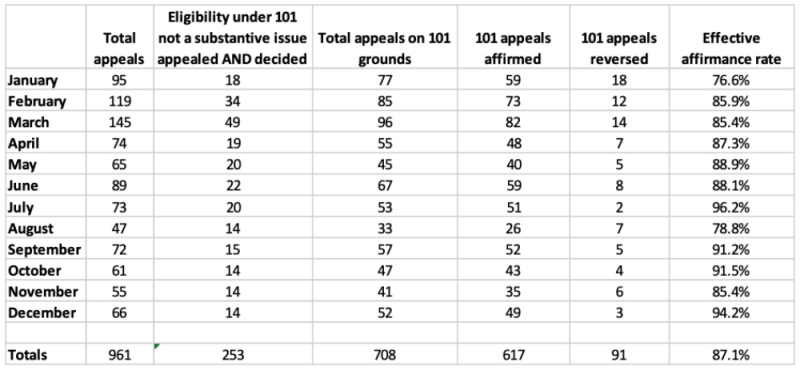Understanding the Basics: What are Trademarks and Service Marks? | Whiteford
In the realm of professional associations, establishing a strong and recognizable brand is crucial. Trademarks and service marks are essential tools that not only protect your association’s brand but also enhance its reputation and credibility among members and the public. They help to attract and retain members, sponsors, and partners. A well-designed mark can communicate an association’s values, quality, and reliability. This article explores the fundamentals of trademarks and service marks, their importance for professional associations, and the benefits they bring.
Types of Marks
Trademarks vs. Service Marks
At their core, trademarks and service marks serve the same fundamental purpose: they both provide a competitive edge by differentiating an association’s goods or services in the marketplace. Unique and recognizable marks can attract and retain members, contributing to long-term association growth. However, they apply to different types of offerings, which can be particularly relevant for professional associations that may offer both products and services to their members.
- Trademarks: These are used to identify and distinguish the goods or products of an association. For instance, an association might trademark the logo used on its publications, merchandise, or educational materials.
- Service Marks: Service marks specifically identify and distinguish the services provided by an association. Examples include general membership services, professional development courses, and conferences.
Both trademarks and service marks play a critical role in brand recognition and member loyalty by ensuring that consumers and members can identify the source of goods or services they trust.
Examples of Each
Understanding the practical application of these marks can be helpful. Here are a few well-known examples:
- Trademark Examples:
- The American Medical Association (AMA): The AMA’s brand is one of the most recognizable in the healthcare sector, largely due to its effective use of trademarks. The distinctive AMA logo used in its publications, advocacy materials, and educational resources has helped the AMA maintain its authority and trust among medical professionals for over a century. These trademarks protect the brand from imitators and ensure that members and the public associate the AMA with high standards and reliable information.
- Project Management Institute (PMI): The PMI logo, which appears on their books and promotional materials reinforces the association’s reputation for excellence in project management standards and education, establishing the association as a trusted name in the project management industry.
- Service Mark Example:
- Federal Express (FEDEX): Federal Express, a leader in the logistics and delivery services industry, has effectively leveraged its service mark to build a strong brand identity. The FedEx logo, with its hidden arrow symbolizing speed and precision, is a registered service mark that reinforces the company’s reputation for reliable and timely delivery. This strategic use of a service mark has been crucial in establishing FedEx as a trusted name in the industry.
Legal Framework
Understanding the legal framework surrounding trademarks and service marks is essential for their effective use and protection, particularly for associations that often operate under complex regulatory environments.
Overview of Relevant Laws and Regulations
In the United States, the primary legislation governing trademarks and service marks is the Lanham Act (also known as the Trademark Act of 1946). This federal statute provides the basis for the federal registration, protection, and enforcement of trademarks and service marks.
- Lanham Act: This Act covers various aspects, including registration procedures, grounds for refusal, infringement, and remedies. The United States Patent and Trademark Office (USPTO) is the federal agency responsible for federal trademark registration and maintenance.
- State Laws: In addition to federal law, each state has its own set of trademark laws that can offer additional protection. However, federal registration through the USPTO provides broader and more robust protection.
- International Treaties: For associations operating globally, international treaties such as the Madrid Protocol facilitate trademark protection across multiple countries with a single application, though they can carry their own challenges in comparison to direct filing in foreign countries.
Benefits of Registration
Registering your trademarks and service marks offers several significant advantages for professional associations:
Legal Protection
- Exclusive Rights: Registration grants the owner exclusive rights to use of the mark in connection with the goods or services listed in the registration.
- Presumption of Ownership: A registered mark provides a legal presumption of the registrant’s ownership and the exclusive right to use the mark nationwide.
- Public Notice: Registration serves as public notice of the registrant’s claim of ownership, deterring potential infringers.
Brand Recognition
- Member Trust: Registered marks enhance member trust by signaling quality and consistency, thus fostering loyalty and engagement.
- Market Presence: A registered trademark or service mark helps establish and maintain a strong market presence, distinguishing your association from others.
Preparing for Registration: Conducting a Trademark Search
Before applying for a trademark or service mark, it is essential to conduct a thorough search to ensure that the mark is not already in use. This involves, at a minimum, a search of USPTO records, and preferably a search of state records and other relevant sources. A comprehensive search helps to avoid potential conflicts and legal issues down the road.
Filing the Application
Once a clear and distinctive mark is identified, the next step is to file an application with the USPTO. The application must include:
- The name and address of the applicant which must be the actual entity using or intending to use the mark.
- A clear representation of the mark as it is used in commerce.
- A description of the goods or services associated with the mark.
- The basis for filing (i.e., whether the application is based on actual current use in commerce or on a bona fide intention to use the mark in the future).
Examination and Publication
After filing the application, the USPTO examines the application to ensure that it meets all legal requirements. This includes checking for potential conflicts with existing marks. If the application is approved, the mark is published by the USPTO, allowing third parties to oppose the registration if they believe it infringes on their rights.
Registration and Maintenance
If no opposition is filed, or if any opposition is resolved in favor of the applicant, the mark proceeds to registration. The registrant must continue to use the mark in commerce and file periodic maintenance documents with evidence of their continued use of the mark to keep the registration active. Failure to do so can result in the loss of trademark rights.
Challenges in Trademark and Service Mark Management
Common Pitfalls
Even after successful registration, managing trademarks and service marks can present challenges. Common pitfalls include:
- Failure to Monitor: Not actively monitoring the market for potential infringements can weaken trademark protection.
- Improper Use: Using the mark inconsistently or inappropriately can dilute its strength and distinctiveness.
- Neglecting Renewal: Missing renewal deadlines can result in the loss of trademark rights.
Enforcement and Legal Actions
Enforcing trademark and service mark rights requires vigilance and a proactive approach. This may involve:
- Sending Cease-and-Desist Letters: To address unauthorized use of the mark.
- Filing Lawsuits: In cases of significant infringement, legal action may be necessary to protect the mark.
- Working with Authorities: In some cases involving law enforcement or customs officials to prevent counterfeit goods from entering the market.
Conclusion: Embracing the Power of Trademarks and Service Marks
Trademarks and service marks are more than just symbols; they are powerful tools that represent an association’s identity, values, and promise to its members. They are vital components of a comprehensive brand strategy for professional associations. They not only protect your association’s brand but also enhance its market value and recognition. By understanding their importance, navigating the legal landscape, and effectively managing and protecting these marks, professional associations can build strong, recognizable brands that safeguard their identity, prevent misuse, and ensure that their members can always identify and trust their offerings.






